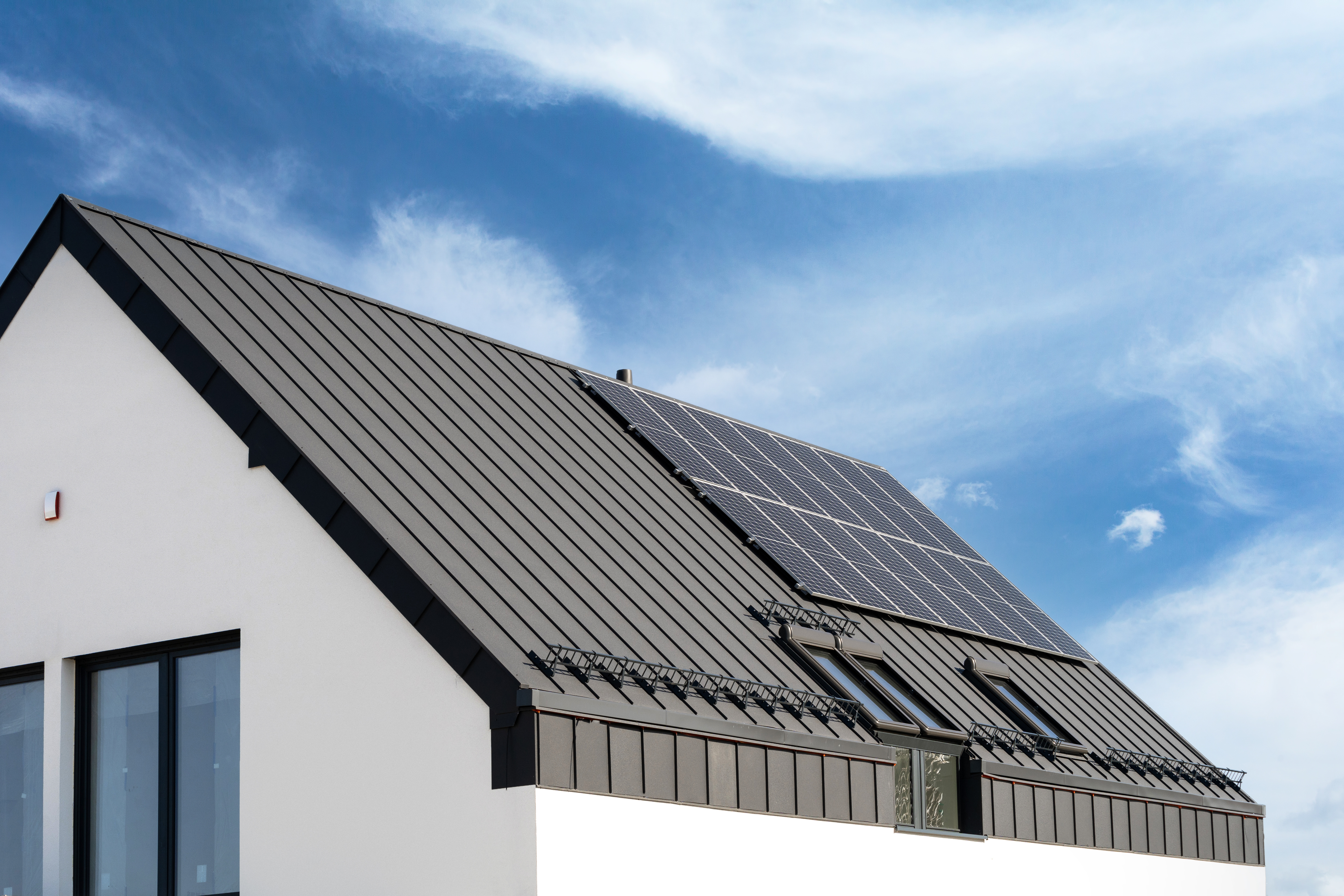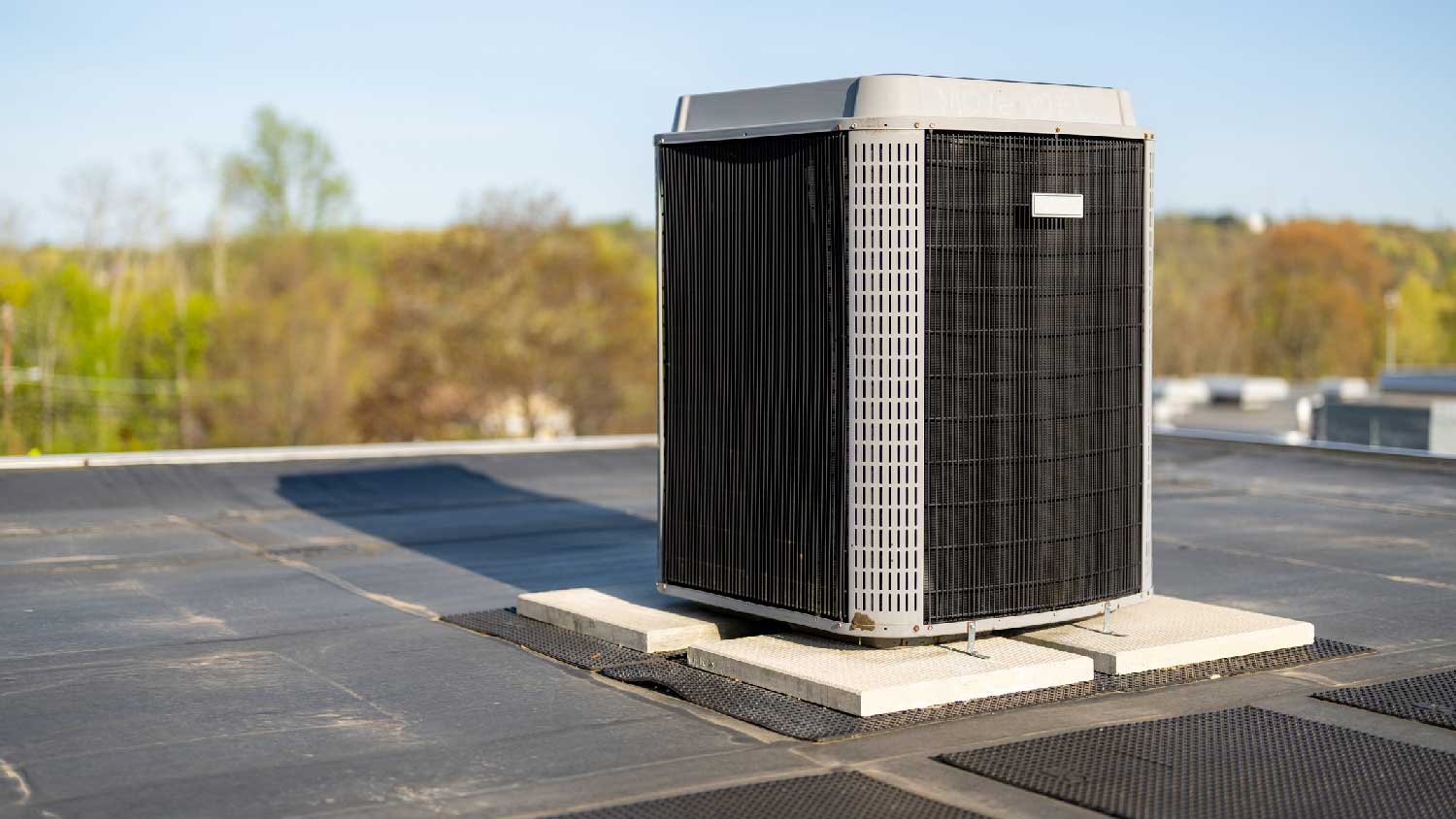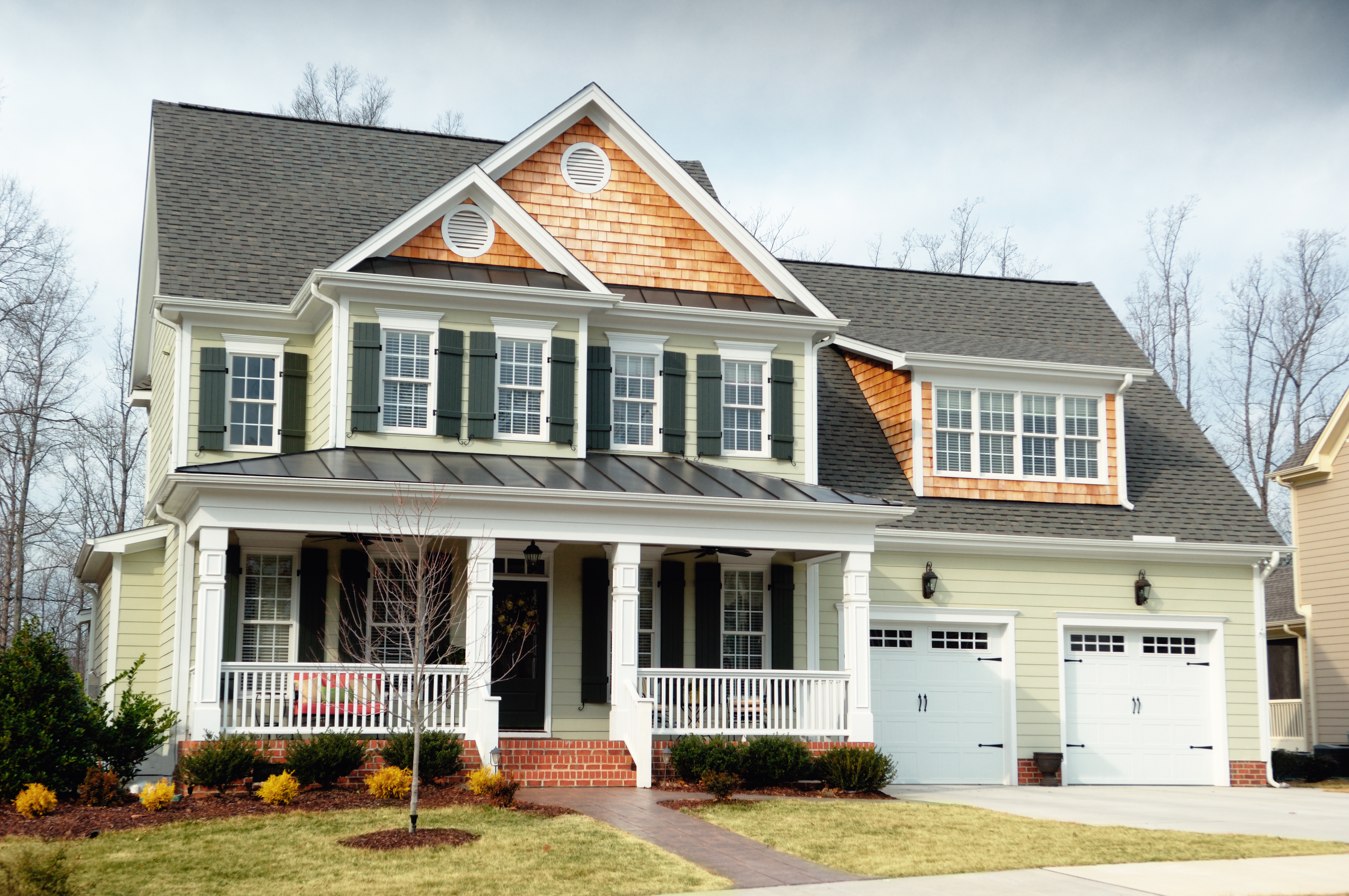
A metal roof can defend your home against Ohio’s varying weather conditions. Learn how much a metal roof costs in Columbus, OH.
EPDM roofing is usually best for cold climates or areas that don’t see extreme weather


EPDM roofing can last for 25 to 30 years, making it a long-lasting option that provides a lot of value.
It’s often black and absorbs heat well, so it can help reduce heating costs in colder climates.
It’s not very resistant to impact, so it’s not a good option if your area sees a lot of extreme weather.
Flat and low-sloped roofs need special roofing materials to prevent leaks, and EPDM roofing is a tried and true option that’s affordable and boasts a long life span. However, it’s not ideal in all situations. In this guide, we’ll discuss the pros and cons of EPDM roofing to help you decide if it’s the right roofing material for your building.
Ethylene propylene diene monomer (EPDM) roofing is a single-ply rubber roofing product that comes in sheets and can serve as the last line of defense for flat or low-sloped roofs. A local roofing company will lay down the sheets, seal the seams, and use one of three installation methods to keep the material in place: mechanical fasteners, adhesives, or ballasts.
| Pros of EPDM Roofing | Cons of EPDM Roofing |
|---|---|
| Long life span | Low impact resistance |
| Relatively affordable | Not very appealing |
| Easy to repair | Low chemical resistance |
| Reduces heating bills | Increases cooling bills |

EPDM roofing comes with some impressive benefits that make it one of the most popular roofing products for flat roofs.
EPDM roofing has been around since the 1970s, so unlike newer roofing products like TPO, it’s a tried and true option for flat roofs. Along with being a trusted material, the fact that it has been around for so long means most roofing companies that handle flat roofs will be able to tackle it, and you should have no issues with finding a professional for repairs if you need them.
The cost to install an EPDM roof sits between $4.25 and $12.00 per square foot, so it’s usually a bit less expensive than some other options, like TPO and PVC. You can also choose a ballasted EPDM roof, which uses heavy ballasts to hold the material in place. This is the easiest and most affordable installation option for a roofing material, and most other flat roof options don’t have this option.
EPDM roofs are one of the easiest flat roofs to repair, so you’ll usually spend less on labor than you would with a TPO or a modified bitumen roof. In addition to the longer life span of EPDM roofing, the ease of repair helps keep long-term costs low.
EPDM roofing is usually black, so it readily absorbs heat from the sun and will transfer some of that to your building. This makes it an energy-efficient option in colder climates, where buildings benefit from the solar heat gain. Ultimately, a black EPDM roof could mean lower heating bills than if you went with a standard white TPO roof.
EPDM roofs last around 25 years, and some building owners can get 30 years or more of useful life out of their rubber roofs. The material is also easy to repair, so regular upkeep can both be affordable and extend the life span of your roof.
EPDM roofing is a rubber material that flexes more than other flat roof types, including TPO. This makes it ideal for areas that see extreme temperature changes and have cold winters and hot, intense summers. The flexibility is a factor in the product’s life span, as well.
EPDM roofing is both recyclable and can include recycled materials during manufacturing. As such, it’s considered a reasonably sustainable building material.

There are, of course, a few downsides of EPDM roofing to consider before installing it on your home or building.
The most significant drawback of EPDM roofing is the low impact resistance. Impacts from hail and blown debris can easily lead to punctures and leave your building prone to water damage. Even walking on the material or dropping tools can cause punctures. As such, it’s not the best option in areas that see hail storms, hurricanes, tropical storms, or tornadoes.
EPDM rubber breaks down more quickly in the presence of petroleum than TPO roofing and modified bitumen roofs. This means it may not be the best roofing material in areas that have a high level of air pollution, like industrial or commercial areas.
Many building owners prefer the clean look of white TPO roofs as opposed to EPDM roofs, which have a flat black appearance in most cases. You can opt for an EPDM roof with a white, reflective surface, but the added layer drives up the material costs, and availability can be limited.
Standard EPDM roofs are black, so they readily absorb heat from the sun. They can also transfer that heat to your building’s interior, so they tend to deliver below-average energy efficiency in hot climates. You’ll likely notice higher cooling bills than if you chose a cool roof material, like a white TPO roof.
There are three primary alternatives to EPDM roofing that are suitable for flat and low-slope roofs:
Built-up Roofing (BUR): BUR consists of multiple layers of asphalt and reinforcing roofing felt, which your roofing professional will create on-site. It’s more affordable than EPDM and has about the same life span, but they’re more challenging and expensive to repair. They also add a lot more weight to your building, and the installation process involves hot tar, which is dangerous and creates fumes.
Modified Bitumen: Modified bitumen is easy and affordable to install, and it’s more fire-resistant than EPDM. However, it has a shorter life span of up to 20 years, it will need regular resealing, and it shares the same low impact resistance with EPDM.
TPO: TPO is a newer flat roof material that is usually white and reflective, making it a cool-roof option for boosting efficiency in hotter climates. TPO provides a cleaner appearance and is also far more resistant to damage from impacts. However, it has a much shorter life span of just 7 to 20 years, has a lower fire resistance, and is typically more expensive to install.
EPDM roofing is very likely the best option for your flat roof if you live in an area that doesn’t see much in the way of extreme weather, including hail storms, hurricanes, or tropical storms. It boasts a long life span of 25 to 30 years or more, and it’s still as affordable as many other options in most cases. Black EPDM roofing is also particularly well suited to buildings in cold climates that would benefit from a little extra heat gain from the sun.
On the other hand, EPDM isn’t ideal in areas that see extreme weather, nor is it the most energy-efficient option in hotter climates.
If you’re looking for a tried and true flat or low-slope roof option that’s affordable upfront and over time, is easy to repair, and requires minimal maintenance, then EPDM might provide the best value.
From average costs to expert advice, get all the answers you need to get your job done.

A metal roof can defend your home against Ohio’s varying weather conditions. Learn how much a metal roof costs in Columbus, OH.

Dealing with a visibly damaged roof or leak? Learn about roof repair costs in Columbus to see how much you’ll need to budget for a permanent solution.

Learn about roof replacement costs in Columbus and what factors are at play to budget accurately and make sure you’re getting a fair price.

There is a calculation for how many soffit vents you need, depending on your square footage. Discover where to install them and what happens to your attic air during winter.

Your home's new tin roof cost will depend on several factors, including its size, materials, style chosen, complexity, and added options.

A roof leak can cause serious damage to your home. Learn what signs of a roof leak to look for and when to call a professional.